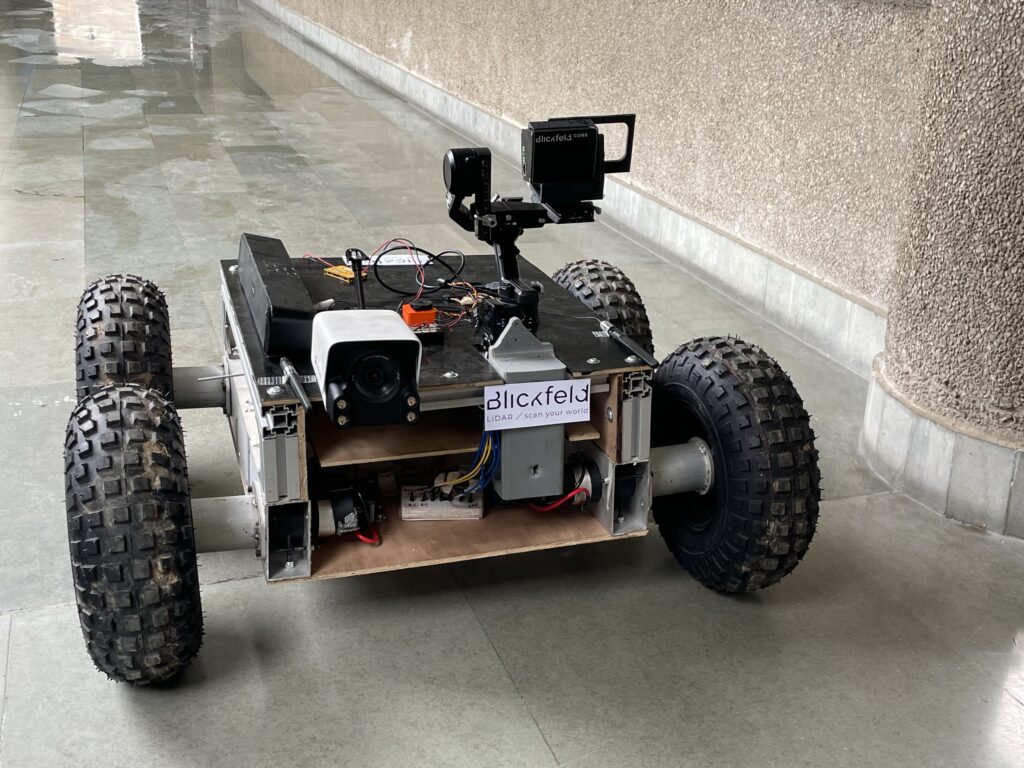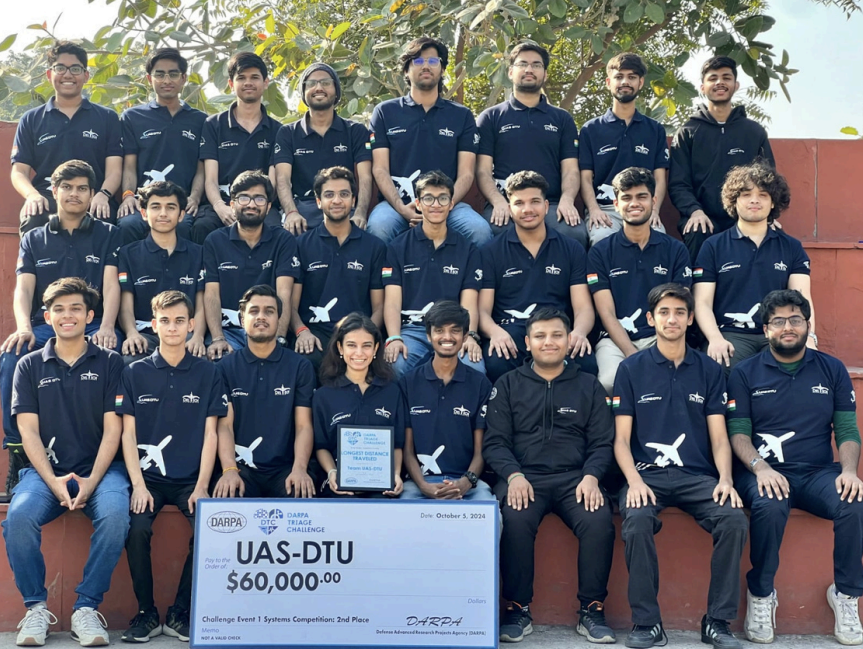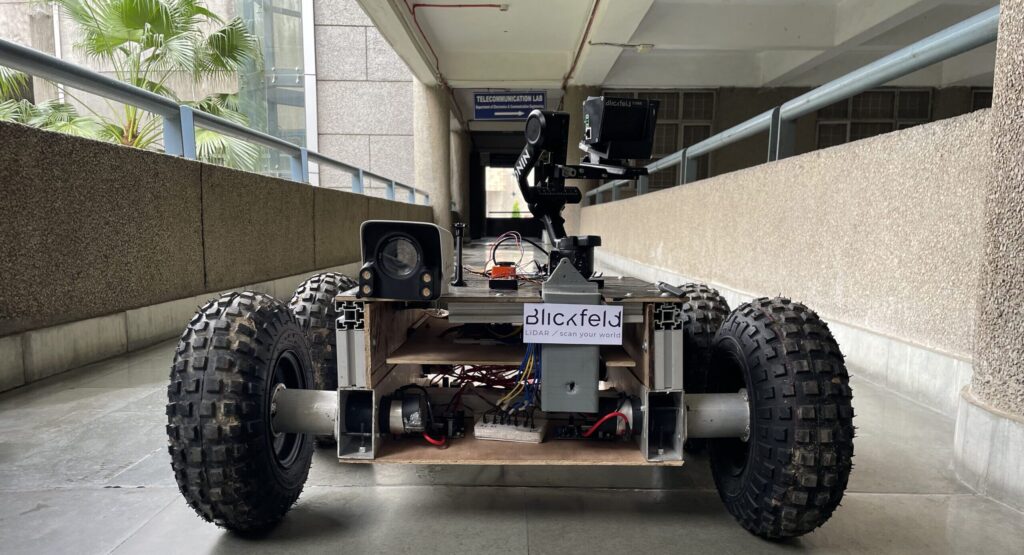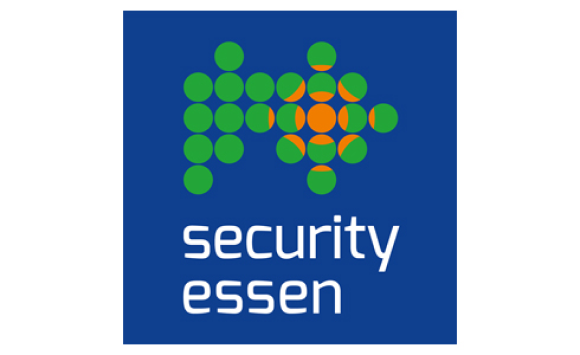The UAS-DTU team (Unmanned Aerial Systems, Delhi Technological University) from India is taking part in the prestigious DARPA Triage Challenge, sponsored by Blickfeld and supported by its LiDAR sensors, which play a key role in navigation, victim localization, and assessment.
The DARPA Triage Challenge is a multi-phase competition designed to advance technologies for fast and precise first response in complex crisis scenarios. Part of the challenge requires teams to operate a multimodal system consisting of UAVs (Unmanned Aerial Vehicles) for aerial situational awareness and UGVs (Unmanned Ground Vehicles) for on-the-ground operations.
Blickfeld LiDAR: Navigation, Localization, and Motion Tracking

For this purpose, the DTU team developed a UGV from scratch, capable of handling off-road terrain while carrying a sensor suite that enables autonomous navigation, victim localization, and condition assessment. Within this sensor stack, the Blickfeld LiDAR plays a central role:
- SLAM for Navigation: LiDAR data allows the UGV to accurately map its surroundings and autonomously avoid obstacles.
- Human Segmentation / Object Localization: LiDAR enables precise detection of victims’ positions on the ground.
- Motion Tracking: By analyzing movements, the system can assess the condition and alertness of the victims.
The LiDAR data is complemented by cameras, radar, acoustic, and infrared sensors: cameras, for instance, focus on the chest area to detect vital signs, while radar monitors respiratory movements. Together, these sensors form a multimodal system that can navigate autonomously and deliver highly accurate rescue information.
Successful First Phase and Looking Ahead to Phase 2
In Phase 1, the DTU team successfully evaluated simulated, stationary victims from a safe distance during daylight. Phase 2 raises the challenge even further:
- Semi-autonomous operation under nighttime conditions
- Precise geolocation of victims
- Handling dynamic changes in victim status and moving targets
- Development of a user-friendly interface for first responders

Phase 2 will take place from September 27 to October 4, 2025. With its innovative LiDAR-powered multimodal sensor setup, the DTU team is well-prepared to meet the complex requirements of the DARPA Challenge, even under night conditions.
The participation of Delhi Technological University demonstrates the power of Blickfeld LiDAR technology in taking autonomous rescue systems to the next level – precise, robust, and highly innovative.



